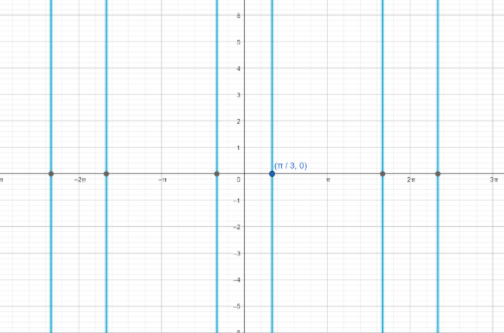Question
Question: How would I solve \(\cos x + \cos 2x = 0\)? Please show steps....
How would I solve cosx+cos2x=0? Please show steps.
Solution
First, substitute u for all occurrences of cosx and factor by grouping. Next, replace all occurrences of u with cosx. Next, set the factor on the left side of the equation equal to 0 and solve for x using trigonometric properties. Then, we will get all solutions of the given equation.
Formula used:
cos(π−x)=−cosx
cos0=1
Complete step by step solution:
Given equation: cosx+cos2x=0
We have to find all possible values of x satisfying a given equation.
Let u=cosx. Substitute u for all occurrences of cosx.
u+2u2−1=0
Factor by grouping.
Reorder terms.
2u2+u−1=0
We know, for a polynomial of the form ax2+bx+c, rewrite the middle term as a sum of two terms whose product a×c=2×(−1)=−2 and whose sum is b=1.
Multiply by 1.
2u2+1u−1=0
Rewrite 1 as −1 plus 2.
2u2+(−1+2)u−1=0
Apply the distributive property.
2u2−u+2u−1=0
Factor out the greatest common factor from each group.
Group the first two terms and the last two terms.
(2u2−u)+(2u−1)=0
Factor out the greatest common factor (GCF) from each group.
u(2u−1)+1(2u−1)=0
Factor the polynomial by factoring out the greatest common factor, 2u−1.
(2u−1)(u+1)=0
Now, replace all occurrences of u with cosx.
(2cosx−1)(cosx+1)=0
If any individual factor on the left side of the equation is equal to 0, the entire expression will be equal to 0.
2cosx−1=0
cosx+1=0
Set the first factor equal to 0 and solve.
Set the first factor equal to 0.
2cosx−1=0
Add 1 to both sides of the equation.
2cosx=1
Divide each term by 2 and simplify.
cosx=21
Take the inverse cosine of both sides of the equation to extract x from inside the cosine.
x=arccos(21)
The exact value of arccos(21) is 3π.
x=3π
The cosine function is positive in the first and fourth quadrants. To find the second solution, subtract the reference angle from 2π to find the solution in the fourth quadrant.
x=2π−3π
⇒x=35π
Since, the period of the cosx function is 2π so values will repeat every 2π radians in both directions.
x=3π+2nπ,35π+2nπ, for any integer n
Now, set the next factor equal to 0 and solve.
cosx+1=0
Subtract 1 from both sides of the equation.
cosx=−1…(i)
Now, using the property cos(π−x)=−cosx and cos0=1 in equation (i).
⇒cosx=−cos0
⇒cosx=cos(π−0)
⇒x=π
Since, the period of the cosx function is 2π so values will repeat every 2π radians in both directions.
x=π+2nπ, for any integer n.
Final solution: Hence, x=3π+2nπ,35π+2nπ,π+2nπ or x=3π+32nπ, for any integer nare solutions of the given equation.
Note:
In the above question, we can find the solutions of a given equation by plotting the equation, cosx+cos2x=0 on graph paper and determine all its solutions.

From the graph paper, we can see that x=3π is a solution of given equation, and solution repeat every 32π radians in both directions.
So, these will be the solutions of the given equation.
Final solution: Hence, x=3π+32nπ, for any integer nare solutions of the given equation.
